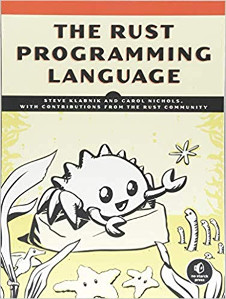Rust: first impressions
I’ve wanted to learn more about the Rust programming language for a while. While somewhat C-like and familiar at first glance, there are several concepts and constructs that were opaque at first glance when I looked at examples of Rust code in the wild. I decided a more structured learning session would help, so I picked up a book that came out earlier this year called, aptly, The Rust Programming Language.

Since this is the official book written by members of the Rust core team, I figured this would be a good guide, and I was not disappointed. It’s a great place to start for someone like me who already has a background in programming and just wants to learn the specifics of Rust. (Though thankfully it does not assume prior knowledge of any specific programming language, so it’s still useful regardless of your exact experience.) I’m only a few chapters in, but I’m already encouraged by what this language has to offer, and I’ve had a lot of fun trying out the examples in the book and poking around at the code.